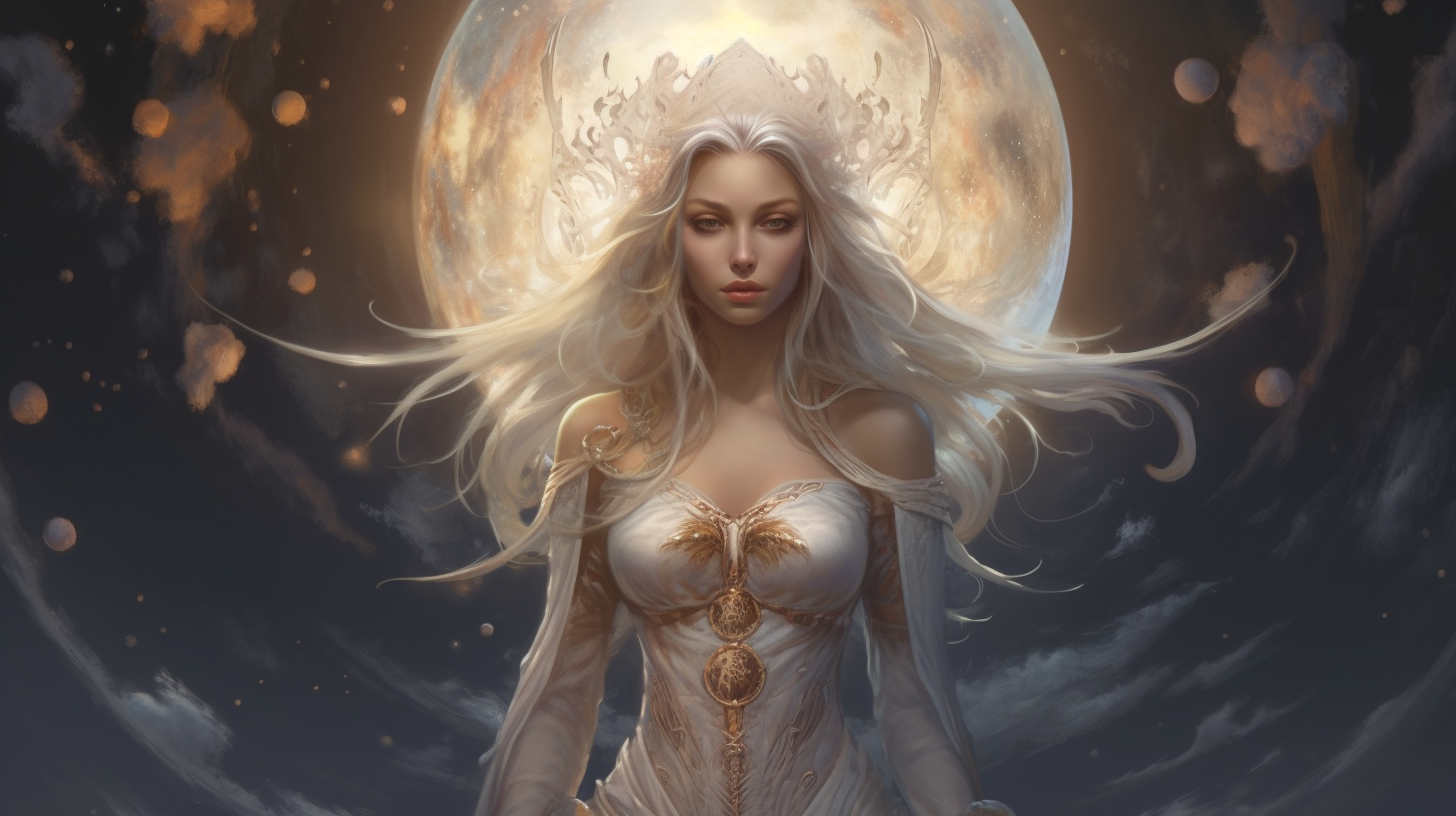Starting the Journey:
For centuries, the Moon has fascinated humanity with its captivating silver glow encompassing our world, igniting imaginations and stirring curiosity. It has been a recurring motif in numerous myths, legends, and cosmic narratives. Among these captivating lunar stories stands out the enigmatic tale of Luna, the Moon Goddess. Let us venture into the mystical realms of mythology to unveil the significance of Luna, the celestial force governing the Moon.
Luna, the Enigmatic Moon Deity:
In ancient legends, Luna reigned as the revered goddess of the Moon, worshipped by diverse ancient civilizations across the globe. Referred to by various names like Selene, Artemis, and Hecate, Luna embodied the divine essence of the Moon’s power and sovereignty. Her radiant glow illuminated the night skies while her enigma fueled the creativity of many cultures.

The Influence of Luna:
Extending beyond her celestial realm, Luna’s impact was profound. She was believed to govern the tides’ ebb and flow, oversee the rhythms of fertility and growth, and regulate the mysterious depths of the human mind. Luna’s essence intertwined closely with nature, spirituality, and the divine feminine, often portrayed as a nurturing and compassionate deity.
Cultural Portrayals:
In ancient Greek mythology, Luna emerged as Selene, traversing the celestial sphere in her silver chariot, casting her luminous light upon the earthly domain. As the sibling of Helios, the Sun God, she shared the eternal duty of illuminating the world below. Selene’s nightly journey symbolized the cyclical nature of existence, death, and rebirth.
In Roman mythos, Luna personified the Moon’s influence over earthly matters. With a crescent-shaped headdress representing the Moon’s phases, Romans honored Luna through rituals and ceremonies, acknowledging her role in maintaining cosmic harmony.
Luna Across Various Traditions and Mystical Practices:
Transcending classical mythology, Luna’s presence permeated religious and mystical rituals. In Wiccan and pagan practices, Luna occupied a central role embodying the divine feminine and representing natural cycles. The lunar calendar played a crucial role in determining auspicious moments for ceremonies and observances.
Furthermore, Luna found a place in mystical spheres of alchemy, astrology, and divination. The Moon’s positioning and phases were believed to carry profound symbolic meanings, influencing human emotions, actions, and spiritual evolution. Her symbolism adorned ancient talismans and amulets, providing protection and guidance to her devotees.
Luna in Modern Perspectives:
While contemporary society has witnessed a decline in the worship of Luna as a deity, her essence continues to resonate in various facets of modern culture. Lunar themes embellish literature, art, and even mainstream music. The Moon’s enigmatic allure remains a wellspring of inspiration for poets, artists, and visionaries, evoking awe and fascination.
Scientific Endeavors and Luna:
Beyond folklore and myth, Luna’s influence extends into scientific exploration. Human curiosity and technological advancements have spurred us to venture beyond Earth’s confines, culminating in groundbreaking Apollo lunar missions. These pioneering expeditions not only enriched our scientific knowledge but also heralded a new era of lunar discovery.
Concluding Thoughts:
Luna, the Moon Goddess, endures as a symbol of mystery, magnificence, and spiritual connectivity. Throughout diverse cultures and epochs, humanity has marveled at the Moon’s transformative influence, attributing it to the divine being known as Luna. Whether as Selene, Artemis, or Hecate, the lunar deity continues to imprint our collective consciousness. As we gaze at the night sky, beholding the Moon’s brilliance, we are reminded of Luna’s everlasting enchantment, perpetuating the legacy of the Moon Goddess.
